Pointy helmets, axes and beards, right? Nothing is more full of myths then history itself, so i decided it would be fun to show what the vikings really did used back then, and from where the “Pointy helmet” myth came from! Read and enjoy my Bored Pandas!
More info: realworldfatos.com
Helmet
First, let’s talk about something important thats not even a weapon: helmets.
You may have seen images of vikings with hats adorned with horns, some may even think that they used them as weapons, but that is not true at all.
The truth is that Vikings never wore pointed hats, their helmets were plain. Today there are only 5 original Viking helmets in existence, but none of them have horns. Apparently Nordic warriors preferred simpler equipment.
The representation of Vikings with horned helmets was an invention of 19th century novels. In 1876, Carl Emil Doepler created horned helmets for Wagner’s first production of the Bayreuth Festival of Der Ring des Nibelungen, which was credited as “inspiring”, even though the opera was set in Germany, not in Scandinavia.
Atgeir
An atgeir was a type of weapon used in the Nordic colonies of Scandinavia. Her name is usually translated as “halberd”, but she was a different weapon.
It looked like a spear with an oddly shaped tip. It could be used to attack an enemy from afar without danger of his sword hurting the Viking.
Bow and Arrow
Like many others the Vikings used the bow and arrow. These weapons were used for both hunting and battle.
The bows were made of yew or elm. The strength of a 10th century bow may have reached around 40 kg (88 pounds) or more, resulting in an effective range of at least 200 meters (656 feet), depending on the weight of the arrow.
The arrowheads were typically made of iron and produced in several different shapes depending on the place of origin. Some arrowheads were also made of wood, bone or horn.
Eagle feathers were tied and glued to the arrows. Historical records also indicate that Vikings may have used splintered arrows to do extra damage to enemies.
Shield
The shield was the most common means of defense for the viking warrior. The sagas specifically mention linden wood for the construction of shields, although the findings in the graves show mainly other woods, such as fir, alder and poplar. These woods are not very dense and are light in hand. In addition, the wood fibers bind around the blades, preventing the blade from cutting deeper, unless more pressure is applied.
In conjunction with stronger wood, Vikings often reinforced their shields with leather or, occasionally iron, around the edge. The round shields appear to vary in size from about 45 to 120 centimeters (17 to 47 inches) in diameter.
Swords
The Viking sword was made to be used with one hand and combined with a shield, with a double-edged blade length of up to 90 cm (35 inches).
Their shape was still based on Roman swords, they were very expensive and a sign of social status. They were rarely used and some swords found in tombs were probably not strong enough to be used in battles or attacks, they were probably just decorative items.
Like Roman swords, they were used in wooden sheaths with leather covers, suspended by a strap on the right shoulder.
Local artisans often added their own details to swords, such as inscriptions on decorated blades and handles, and many swords were given names, that’s right, Vikings really did named their swords!
Knifes
Two distinct classes of knives were used by the Vikings. The most common was a simple knife, of normal construction, called a knifr. They are found in most Viking graves, being the only weapon allowed for everyone, even slaves could have them.
Smaller versions served as the everyday utility tool, while longer versions were probably intended for hunting, combat or both.
The knife apparently played an important role for all Scandinavians. This is evidenced by the large number of knives found in burial places not only for men, but also for women and even children.
Seax
The other knife was the seax. The type associated with the Vikings is the so-called “broken style seax”. It was generally a little heavier than the ordinary knife and could also serve as a machete.
A richer man could have a bigger seax, as big as swords. With the single edge and heavy blade, this rather coarse weapon would be relatively simple to use and produce, compared to the normal sword, as any blacksmith could make them.
Wide Ax
Called breiðöx (“wide ax”) double axes would have been very rare, as they used more material and were seen as a waste during difficult times.
It is known that Vikings preferred axes that could be used in melee but also thrown at the enemy, they had to be strong enough to crack a human skull without breaking.
Axe
After the spear, the most common hand weapon among Vikings were axes, because as we said, swords were expensive and only rich warriors could afford them. Axes, however, were agricultural tools and almost everyone could have one, even Viking women were buried with them.
Various types of larger specialized axes for use in battle evolved during the Viking Age, with larger heads and longer axes. The larger shapes were as long as a man and made to be used with both hands, called Dane Axe.
Some ax heads were inlaid with silver designs. There were ax heads with crescent-shaped edges, measuring up to 45 centimeters (17 inches).
Slingshot
The Viking slingshot was undoubtedly the easiest weapon for the manufacturer to produce, simply consisting of a rope and sometimes a leather “cup” to assist with loading, the rope was often easily obtained, giving many men and women of the low-class easy access to a powerful weapon.
The slingshot, or sling, would have been used mainly by the lower class, peasants and farmers and could be used in offensive and defensive maneuvers
Spear
The spear was the most common weapon of the Scandinavian peasant class, but throwing spears were constantly used by the warrior class, thus being the main weapon of the Vikings.
The weapons consisted of metal tips with a blade and a hollow shaft, mounted on wooden pieces of 3 meters (9 feet) long, and were typically made of ash wood.
The spear points could measure between 60 cm (23 inches). Hook lance tips are called krókspjót (“hook lance”). Some larger-tipped spears were called höggspjót (“spear cut”) because they could also be used to cut enemies.
The throwing spears were less decorated than those used for cutting, as the throwing spears were often lost in battle.
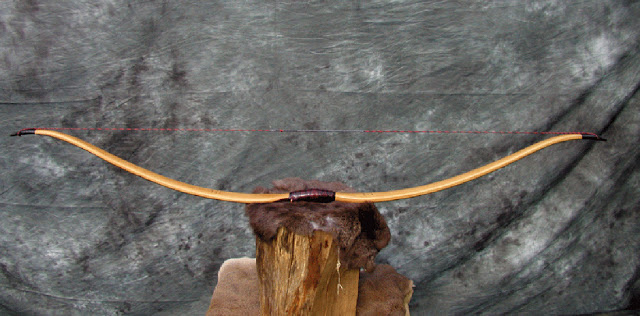
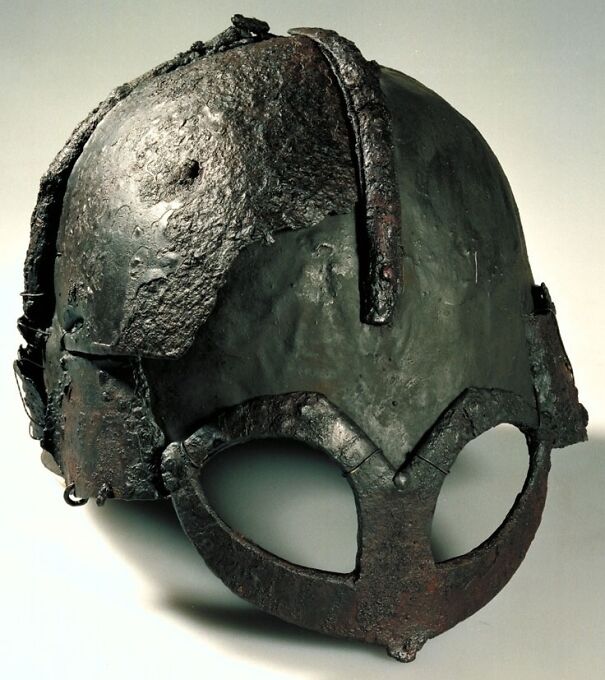
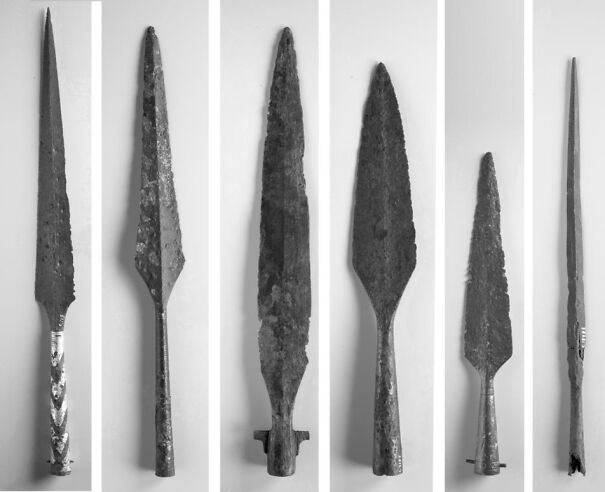
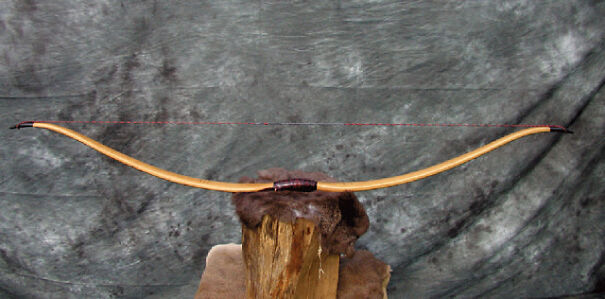
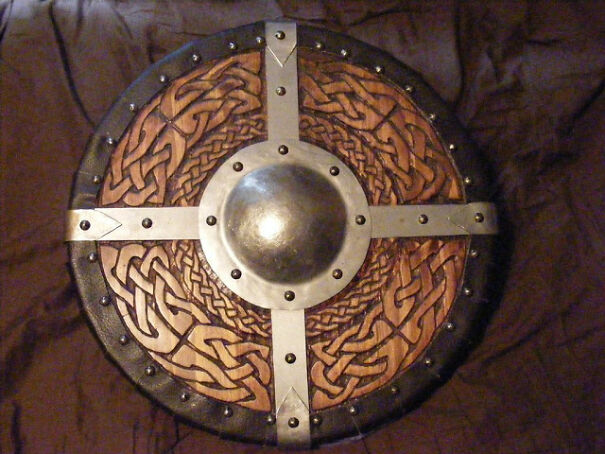
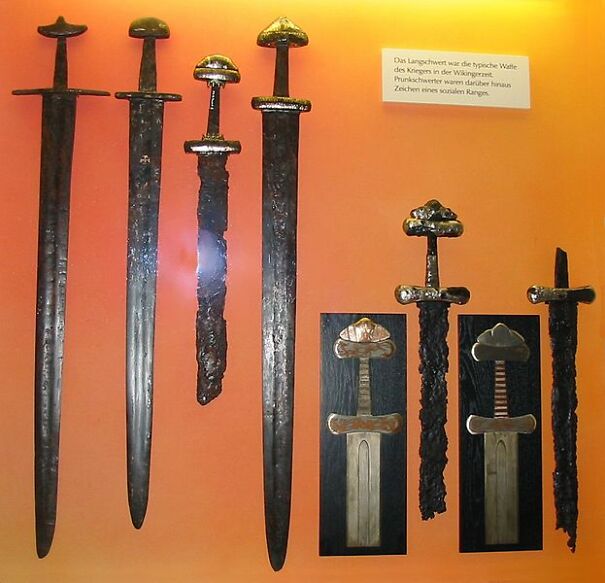
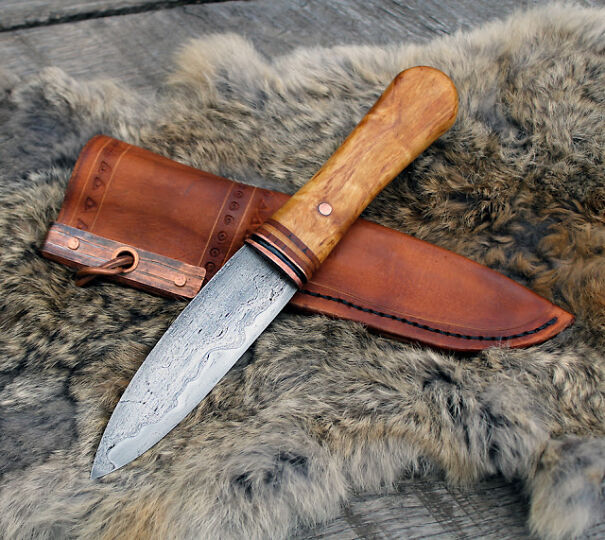
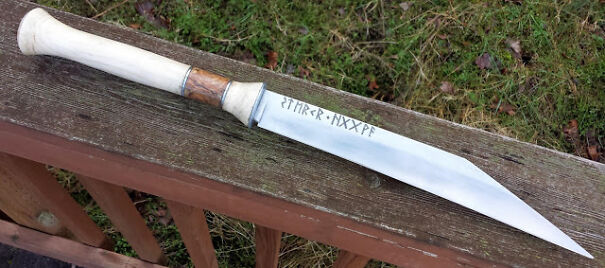
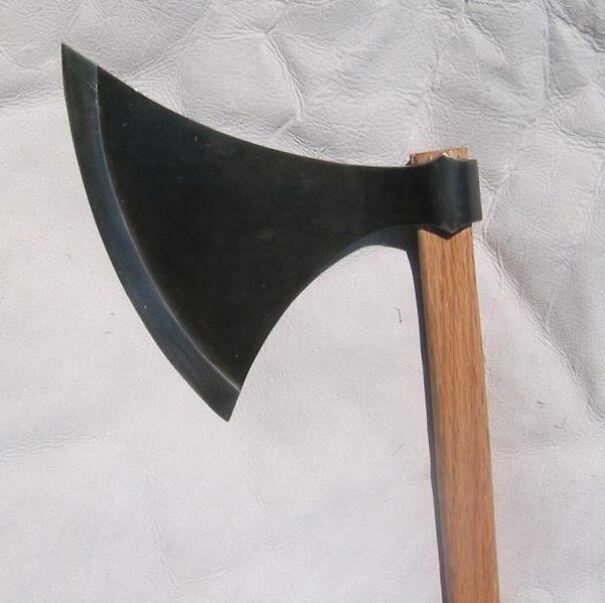
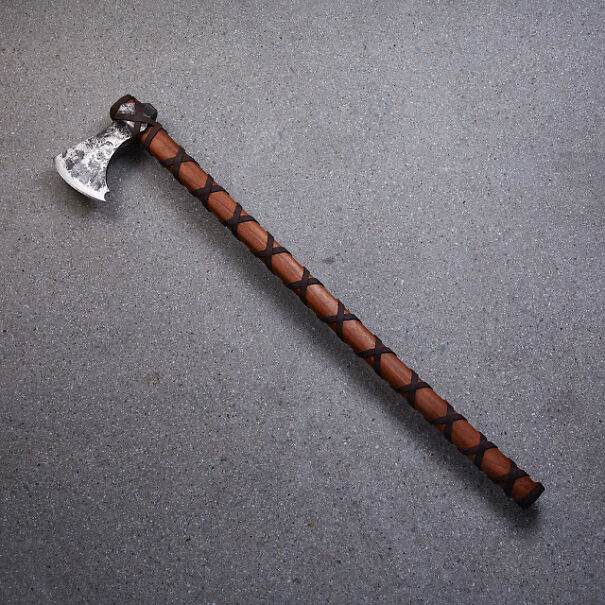
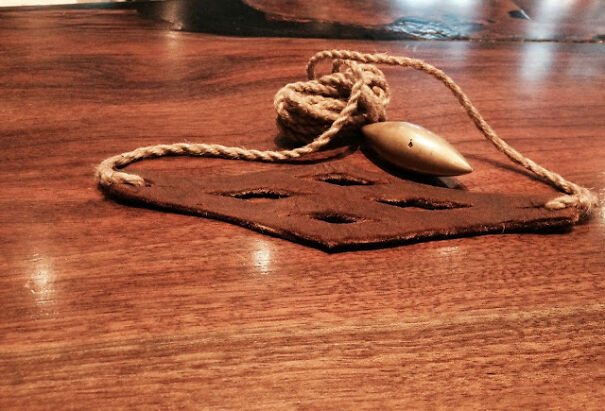
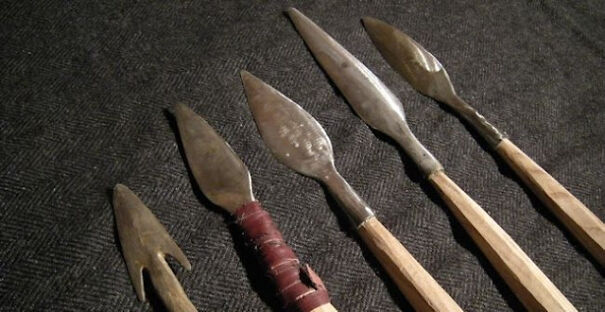




2
1